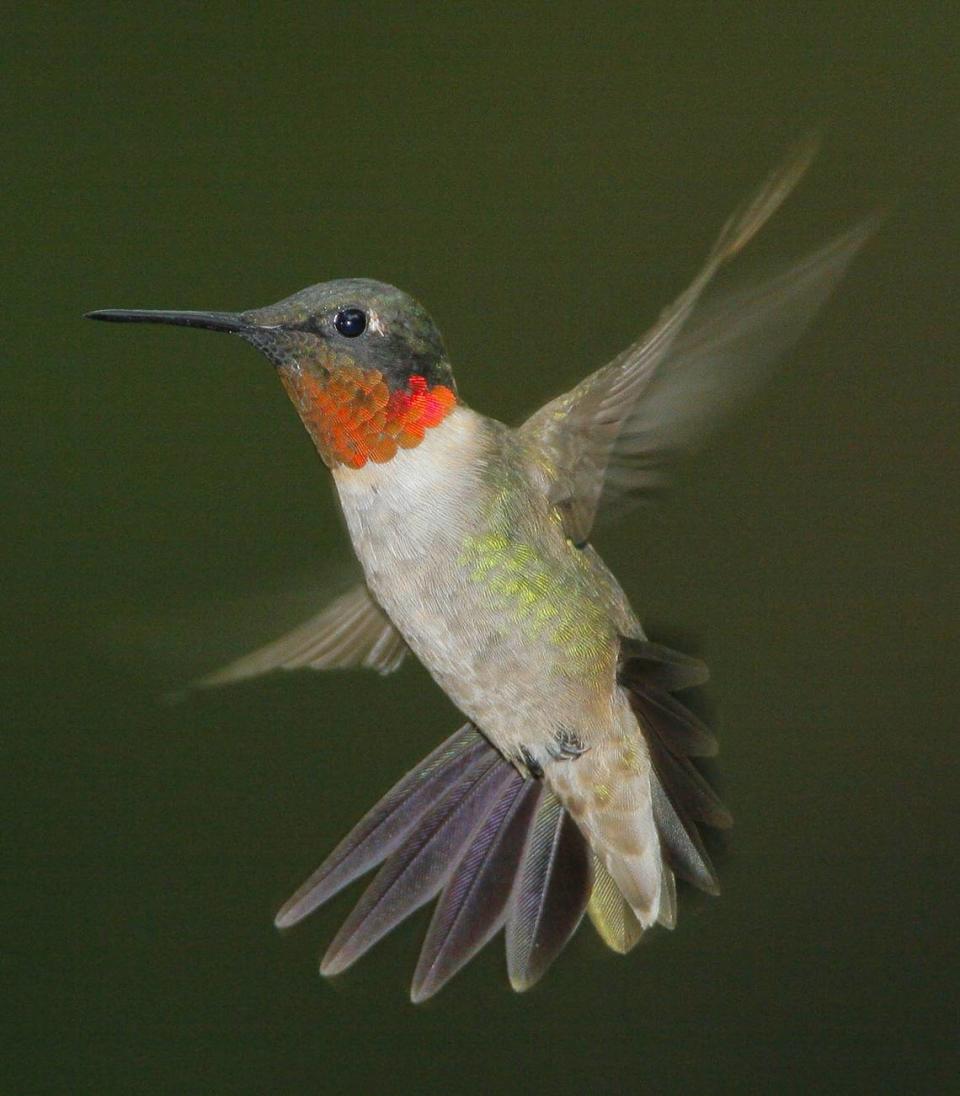Hummingbirds are making their way to the metro-east. When to spot them, set up your feeder
Spring is officially here, and the new season ushers in a variety of migrant birds, including the tiny, fan-favorite hummingbird.
While March 21 is the earliest hummingbird arrival date on record in Missouri, they typically start to trickle in closer to early April, Bill Rowe, president of the St. Louis Audubon Society, told the News-Democrat in an email.
Here’s what to know about the hummingbirds’ arrival and what you can do to attract them.
Which hummingbirds are in southwestern Illinois, St. Louis?
Although the metro area is occasionally visited by other species, only one type of hummingbird is regularly seen locally in the spring.
“Our only normal species here, and throughout the eastern United States and Canada, is the Ruby-throated Hummingbird, but at times, mainly in fall, we get other species from the west as rare visitors, most often the Rufous Hummingbird but others have occurred too,” Rowe said.
The ruby-throated hummingbird has red and green coloring and many of them winter in Central America.

“These brilliant, tiny, precision-flying creatures glitter like jewels in the full sun, then vanish with a zip toward the next nectar source,” the All About Birds website reads.
On average, a ruby-throated hummingbird weighs only 0.1 to 0.2 ounces, or less than a nickel, according to the American Bird Conservancy. Their wingspan is about 3.1 to 4.3 inches, and their bodies are 2.8 to 3.5 inches long.
When does hummingbird migration peak?
Hummingbird migration usually peaks in early May, Rowe said. Their numbers increase again in late summer and early fall, he continued, as the hummingbirds begin coming south again in July.
“Beyond early October, they become rare but will occasionally stick around at feeders into late fall or even December,” Rowe said.
According to the Hummingbird Central migration map, sightings have not yet been reported this year in the metro-east or St. Louis. The map includes data reported by Hummingbird Central readers, and the site notes sightings are not posted immediately and not every sighting is included.
Here’s where hummingbird sightings have been reported in 2023:
You can report hummingbird sightings online to Hummingbird Central.
How can you attract hummingbirds?
Ruby-throated hummingbirds are attracted to tubular flowers and feeders. To set up a hummingbird feeder, mix about a quarter of a cup of sugar with one cup of water. The mixture should be emptied every two or three days or daily in hot weather.
“The easier it is to clean a hummingbird feeder, the more likely you are to do it often and well. The fill hole should be large enough for you to be able to get a bottlebrush inside, and every crevice should be easy to scrub,” the All About Birds website says.
You can use a glass or plastic bottle/tube feeder, and it may be helpful to use bee guards. Avoid yellow bee guards, as they might actually attract bees.
If you want lots of hummingbird visitors, opt for multiple small feeders rather than one larger one. The species is often territorial around food, and you’re unlikely to have several congregating at one spot.
All About Birds recommends placing your feeder outside of direct sunlight, as the sun causes the sugar to spoil quickly.
Tubular flowers also attract the ruby-throated hummingbird, and the species tends to prefer red or yellow ones, such as the cardinal flower, spotted jewelweed, bee-balms and trumpet creeper.


